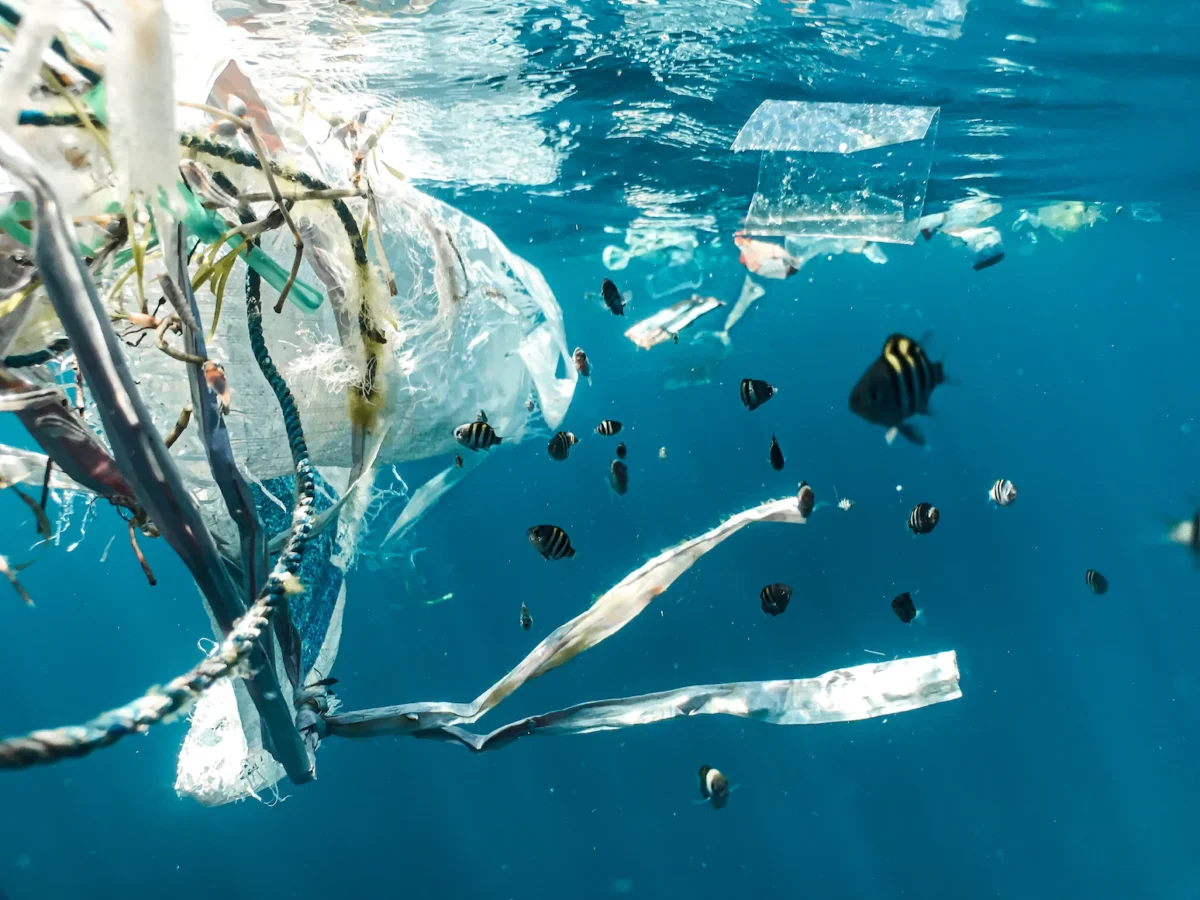Out of the 17.6 billion pounds of plastic dumped into the oceans every year, two thirds of that ends up in the Northern Pacific Ocean. As the world’s largest ocean, the Pacific reaches the western coasts of North America and South America, and the eastern coasts of Asia and Oceania. This 161.76 million square kilometer ocean is home to 228,450 known animal species, and many of these species are endangered by habitat destruction.
The Pacific Ocean’s pollution is sourced from both human activities as well as organic pollutants. Organic pollutants from the atmosphere include toxic chemicals such as aldrin, dieldrin, heptachlor and toxaphene, which are long lasting in the environment and contaminate the ocean through air particles. 20% of human-caused pollution comes from waste thrown directly into the ocean, both accidently and purposefully by boats and ships. The other 80% comes from land-based human activities such as sewage disposal and littering. Due to these activities, two trillion plastic and microplastic pieces have accumulated in the Pacific ocean, 70% of which sink to the bottom of the Pacific and rest on the deep ocean floor.
As ocean trash affects the wellbeing of ocean wildlife, the most prevalent and dangerous source of ocean pollution is nonpoint source pollution, which refers to the diffuse contamination of water or air that does not originate from a single discrete source. Nonpoint source pollution comes from fertilizers and other toxic chemicals which end up in the ocean through rain, snow melts, and runoff. This source of pollution is the most difficult to prevent and control since the specific source is unknown, and therefore untraceable.
Research found that the countries most responsible for the disposal of plastics in the ocean are China and Indonesia, who account for a third of all plastic waste in global waters. Due to their access to the Pacific Ocean and influx of plastic waste, the majority of the plastic disposed from these two nations ends up in this body of water.
The immense amount of plastics and other debris dumped into the Pacific come together to create a large space of garbage known as the Pacific Garbage Patch. This area of garbage is located in the North Pacific Ocean, roughly between San Francisco and Hawaii, where currents converge and collect debris. This garbage patch is created by a gyre, which is a system of circulating currents in an ocean. The North Pacific Subtropical Gyre is formed by four currents rotating clockwise around an area of 20 million square kilometers. Because the area in the center of a gyre tends to be very calm, the circular motion of the gyre draws debris into this stable center, where it becomes trapped. These swirling currents bring plastic together into one place in the Northern Pacific.
This giant garbage patch is the result of biodegradable plastic being unable to decompose naturally, allowing it to float and eventually break down into tinier pieces, creating microplastics. A vast amount of the garbage patch is also made up of synthetic fishing nets, which can be very harmful to seals and other marine animals who get entangled in them, causing them to drown. Mistaking them for jellyfish, loggerhead turtles consume plastic bags which can hurt, starve, or suffocate them. Marine debris also disturbs the marine food webs in the Northern Pacific by blocking sunlight from reaching the plankton and algae below. These autotrophs, or producers, provide food and nutrients to animals such as fish and turtles. If these animals lose their food supply, their population will decrease, resulting in the diminishing population of apex predators such as tuna, sharks, and whales. This disruption in the food chain can eventually lead to the endangerment, and even extinction, of most marine animals who live within the North Pacific Subtropical Gyre.
The North Pacific garbage patch continues to expand in length and depth as individuals and corporations continue to carelessly discard their plastic. This patch will continue to kill marine plants and species as it grows in size. Individual organizations have attempted to begin cleaning up the patch, but because of the millions of microplastics in these waters, small creatures and animals reamin in harm’s way. The National Ocean and Atmospheric Administration’s Marine Debris Program has estimated that it would take 67 ships in one year to clean up less than 1% of the North Pacific Ocean.
Approximately 8 million pieces of plastic end up in the ocean every day, most of which ends up in the Pacific. The Northern Pacific Ocean is home to thousands of marine species who are harmed each day by the destruction of their habitat caused by plastic pollution. Scientists and explorers agree that limiting or completely eliminating our use of disposable plastics and increasing our use of biodegradable resources is the first step of the very long journey to clean up the Great Pacific Garbage Patch.
Sources
Bardach, John E. “Pacific Ocean.” Encyclopædia Britannica, Encyclopædia Britannica, Inc., https://www.britannica.com/place/Pacific-Ocean.
“Basic Information about Nonpoint Source (NPS) Pollution.” EPA, Environmental Protection Agency, https://www.epa.gov/nps/basic-information-about-nonpoint-source-nps-pollution
“Great Pacific Garbage Patch.” Beachapedia, http://www.beachapedia.org/Great_Pacific_Garbage_Patch.
Nall, Rachel. “Statistics on Pollution in the Pacific Ocean.” Home Guides | SF Gate, 17 Nov. 2020, https://homeguides.sfgate.com/statistics-pollution-pacific-ocean-79352.html.
National Geographic Society, Caryl-Sue. “Great Pacific Garbage Patch.” National Geographic Society, 9 Oct. 2012, https://www.nationalgeographic.org/encyclopedia/great-pacific-garbage-patch/ .
“Pacific Ocean.” AZ Animals, 13 July 2021, https://a-z-animals.com/animals/location/ocean/pacific-ocean/.
Richter, Felix. “Infographic: The Countries Polluting the Oceans the Most.” Statista Infographics, 12 Feb. 2020, https://www.statista.com/chart/12211/the-countries-polluting-the-oceans-the-most/.

